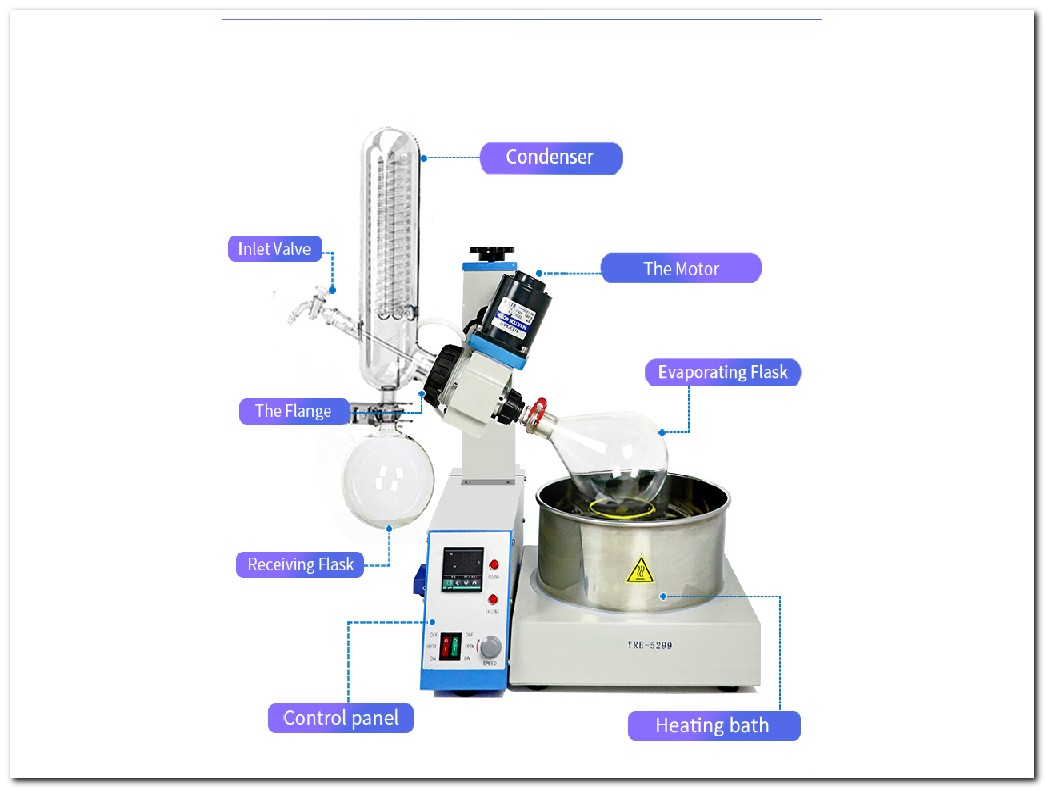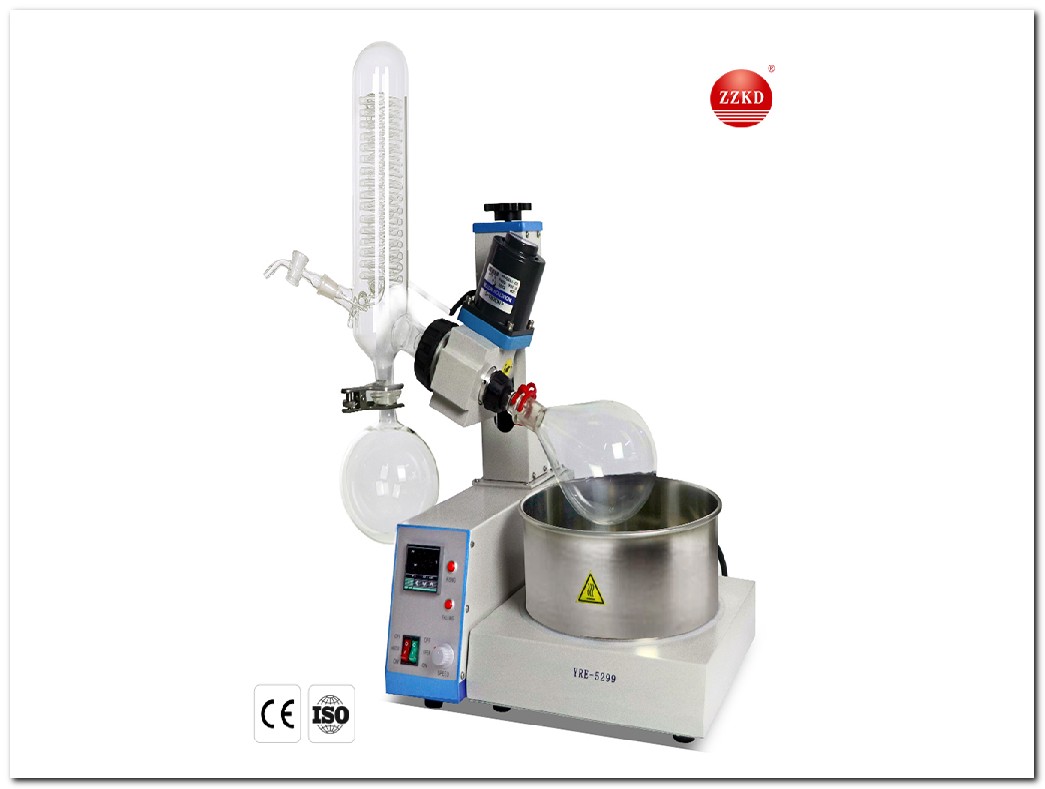Four Factors Affecting The Distillation Efficiency Of Rotary Evaporator
There are four main factors that affect the evaporation efficiency of the Vacuum Distillation Rotary Evaporator as follows:
1. The temperature of the water bath
The higher the temperature of the heating pot, the faster the distillation effect of the solvent, but considering the heat sensitivity of the target ingredient and the safety of operation, the commonly used temperature is 60°C. Moreover, above 80°C, switching to silicone oil as the medium will cause cleaning problems. Generally, it is recommended to reduce the vacuum value to achieve faster distillation efficiency. At present, the best diaphragm vacuum pump on the market can achieve an ultimate vacuum of 2mbar, and DMF can be distilled at room temperature.
2. Vacuum degree of rotary evaporation system
The closed space of the rotary evaporator is composed of glass components such as evaporating bottle, evaporating tube, sealing ring, condenser tube, vacuum buffer bottle, vacuum pump and vacuum pipeline. Among them, the most critical and variable factors affecting the vacuum degree of the system are: vacuum pump , sealing rings and vacuum tubes.a. Vacuum pump and vacuum controller: The lower the vacuum pump limit is, the lower the vacuum value of the system is. During distillation, it is necessary to set a reasonable vacuum value through the vacuum controller to ensure the distillation efficiency and avoid bumping. At present, the ultimate vacuum of the diaphragm vacuum pump is as low as 2mbar, and the ultimate vacuum of the circulating water pump is about 50mbar (0.095kpa). If budget allows, a vacuum controller or vacuum valve is necessary to control the system vacuum required for distillation.
b. Sealing ring: As the key seal to undertake the evaporating tube and the condensing tube, its wear resistance and corrosion resistance are the key. The materials commonly used for sealing rings are: PTFE and rubber. Obviously, PTFE has better wear resistance and corrosion resistance. Some manufacturers have added stainless steel buffer shrapnel in the sealing ring, which has better wear resistance.
c. Vacuum tube material: Generally, manufacturers do not have standard vacuum tubes. When purchasing by themselves, silicone tubes are naturally the first choice because their aging efficiency is slower than rubber tubes.
3. Whether the Vacuum Distillation Rotary Evaporator condensation recovery unit is efficient
The boiling of some samples, such as ethanol and water, if the condensation recovery efficiency is not high enough, will lead to the loss of collected samples; to ensure the best distillation efficiency, the cooling medium is generally recommended to maintain a temperature difference of 40°C from the heating pot temperature, so that the The hot steam is rapidly condensed, reducing the effect of the steam on the system vacuum. The condensation area and shape design of the condenser will also affect the distillation efficiency. The laboratory rotary evaporator is equipped with two condensers with different condensation areas: 1200cm2, 1700cm2, and the industrial-grade rotary evaporation condensation area can reach 1.2m2.4.The rotation speed of the evaporation bottle
a. Due to the centripetal force and friction between the liquid sample and the evaporating bottle, the liquid sample forms a liquid film on the inner surface of the evaporating bottle, and the heating area is large.b. The force generated by the rotation of the sample effectively inhibits the boiling of the sample.
c. The faster the rotation speed of the evaporation bottle, the larger the infiltration area of the inner surface of the bottle, and the larger the heating area; but at the same time, the thicker the liquid film thickness, which increases the heat transfer temperature difference.
5. The immersion angle of the evaporating flask
The angle at which the evaporating flask is immersed in the heating bath also greatly affects the efficiency of the experimental distillation. The closer the angle of the evaporating flask is to the horizontal, the stronger the internal sample flow can be, thereby improving the distillation efficiency. However, the horizontal angle cannot guarantee that the solvent in the evaporating flask can be immersed in the bath medium to the greatest extent. Especially for small-capacity evaporating flasks, bubbles or bumping are very likely to occur due to the small amount of sample. Therefore, it should be ensured that the liquid level of the solvent in the evaporating flask is as close as possible to the liquid level of the medium in the bath. Based on the above, the recommended immersion angle of the evaporation flask is about 25 degrees. Both DLAB models RE100-Pro and RE100-S can change the angle of the evaporating flask by adjusting the angle of the host.
Finally, there is an optimum rotational speed for materials of different viscosities. And the rotating power is provided by the motor. There are DC brushless motors, AC motors and stepper motors on the market, which are uneven. The feedback of DC brushless motors is good.
A proper understanding of How To Use Rotary Vacuum Evaporator and the factors that affect the evaporation efficiency of a rotary evaporator will allow you to perform better experiments.
If you want to know more about rotary evaporator, please contact us in time! ZZKD has always been at your service!




